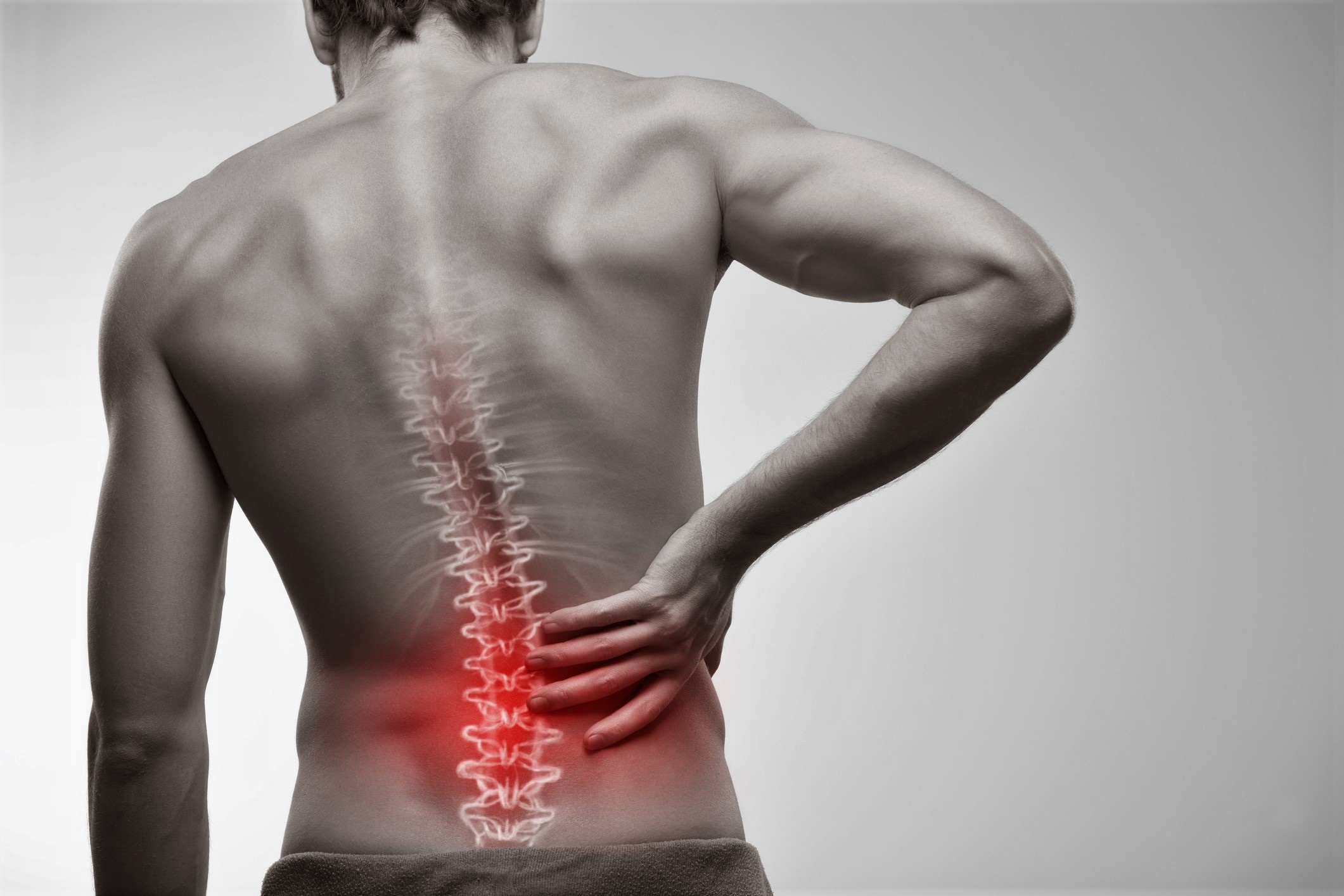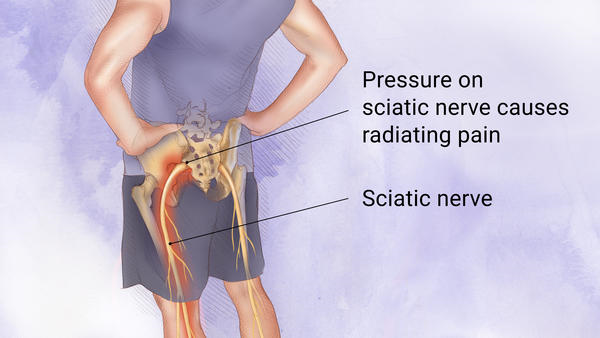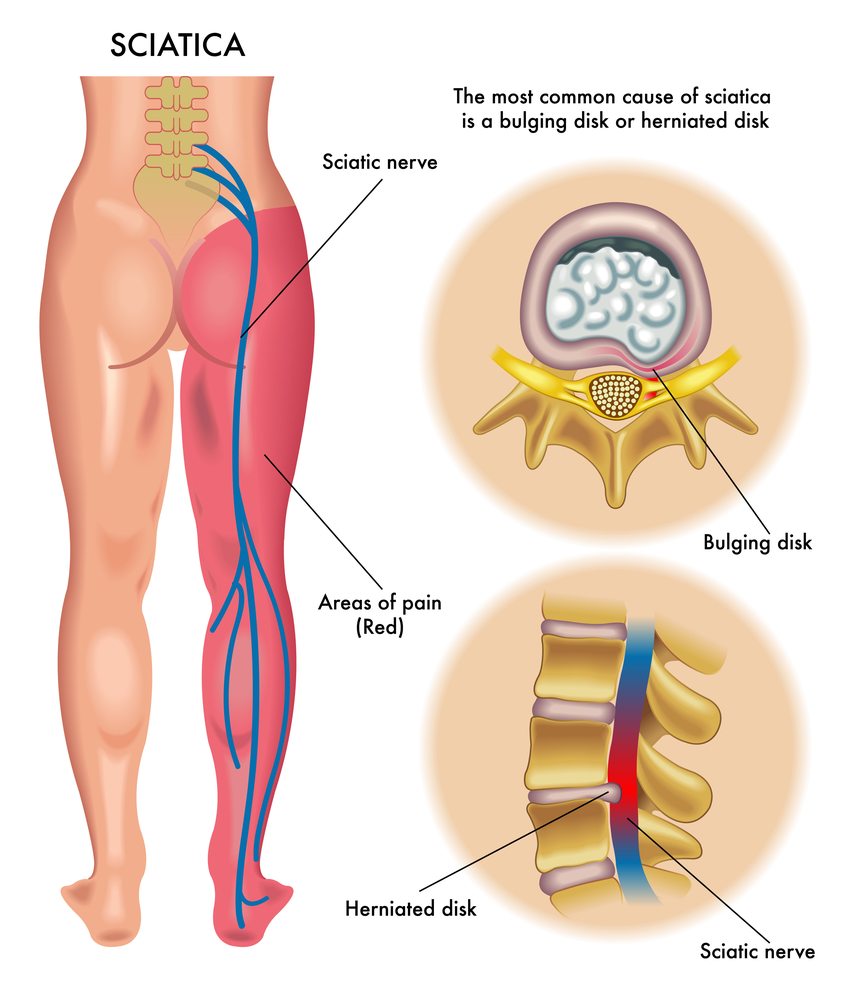Sciatica
Does a Chiropractor Help With Sciatica?

Chiropractors are very helpful regarding treating sciatica. However, the recovery is much longer than for other conditions. Many people experience a shorter recovery time with exercise alone. This is because exercise can help alleviate sciatica pain. However, you should be aware that not every chiropractic therapy will be effective for your specific condition.
What is sciatica?
Sciatica refers to a type of pain that occurs when the sciatic nerve gets pinched. The sciatic nerve runs from your lower back to your hips and down each leg. Sciatica pain can occur anywhere along this route and often feels throughout the length.
There is usually only one side of the body affected by sciatica. It can be either mild or severe. It can feel like an electric shock, or as deep-seated aching pain. You may notice weakness or numbness in the affected foot and leg. The most common cause is a herniated disk in your spine pressing on the sciatic nerve. This can also happen if a bone spur presses against the nerve, or if your spine narrows and puts pressure onto the nerve. Sciatica can often be resolved on its own. If it doesn’t resolve, it’s worth seeing a doctor.
If left untreated, sciatica may cause permanent nerve damage. This can cause you to lose sensation in the affected leg, or worse, your bladder and bowel control may be compromised.
What Does Sciatic Pain Feel Like?
An aching or burning sensation may range in intensity from a mild ache up to excruciating pain. This sensation can sometimes feel as if it is electric shock-like. The symptoms can be aggravated by coughing or sneezing, and prolonged sitting can worsen them. These symptoms usually affect one side of the body.
Is Chiropractic Good For Sciatica Pain?
Depending on the cause of sciatica, chiropractic care may reduce pain and improve muscle function. The duration of treatment will depend on the severity of the pain and the individual’s needs and circumstances. Maintenance visits should be made as necessary to keep the body in proper alignment and prevent the pain from coming back. Most patients notice relief after six to ten visits, although some may need more. Chiropractic treatments are highly effective in improving the symptoms of sciatica and other back conditions, including headaches and stiffness.
The general safety of chiropractic care is very high, with very few risks. It is essential to find out when to seek medical attention for sciatica, however. Long-term pressure on the sciatic nerve can lead to symptoms like leg numbness or incontinence. If you have sciatica, it is important to find relief as quickly as possible. If you have any doubts about chiropractic care, talk to your doctor or chiropractor near you about a consultation.
Can A Chiropractic Treatment Fix Sciatica In A Short Amount Of Time?
The average chiropractic patient requires six to twelve sessions in two to four weeks to experience pain relief from sciatica. After these sessions, patients will usually experience a plateau in their recovery. Chiropractic care can help patients recover from accidents, work injuries as well as other musculoskeletal injuries that will result in pain relief. Chiropractors are skilled healers who can help people manage pain and restore mobility. They can help with a wide range of conditions and diagnose the exact problem.
Chiropractors are trained to correct spinal problems such as vertebral subluxation. Misaligned vertebrae can affect your metabolism, emotions, and mental state. Chiropractic adjustments help restore proper posture and relieve trapped nerves. One session lasts for about 30 minutes. Once the adjustment is complete, the patient can resume normal activities. The time frame to recovery is different for each person, but the benefits are well worth the time.
Can Chiropractic Care Make Sciatica Worse?
Chiropractors are trained to find the exact cause of sciatica, a painful condition that is often triggered by a pinched sciatic nerve. Because the sciatic nerve travels down the back and affects the lower leg and foot, misalignments in the lower back can interfere with the proper communication between the sciatic nerve and the body. When this happens, patients experience pain in the lower leg, buttocks, and even the feet. The pain may also be numb. Sitting for long periods may worsen sciatica pain.
While many people benefit from chiropractic care for sciatica, some patients experience a worsening of symptoms. This is because the spine can become shorter and the disks can become thinner. Chiropractors use spinal decompression techniques, which help relieve compression on the sciatic nerve. This procedure can include techniques to lengthen the spine and increase the space between vertebrae. It is important to see a chiropractor regularly to avoid a relapse of sciatica pain.
What is the most effective treatment for sciatica?
Home treatment is one of the best ways to reduce the pain and restore mobility caused by sciatica. Ice packs, a bag of frozen vegetables wrapped in a towel, and heat therapy are all effective ways to reduce pain. It is important to alternate these methods to avoid any potential complications, however, because prolonged cold or heat therapy may worsen the pain. If you want to avoid surgery or use over-the-counter medication, you can try natural treatments such as chiropractic manipulation, yoga, or massage.
Home treatments for sciatica may help relieve the pain for a short time, but conservative treatments will not provide permanent relief. You may be concerned about visiting a doctor for treatment, but a proper diagnosis is essential to prevent future problems. A health insurance provider will be able to determine the best treatment for your sciatica condition. If self-care treatments don’t provide relief after 6 weeks, a physician can help you find a treatment that works best for your specific condition.
What triggers sciatica?
If you are experiencing sciatica, you may be wondering what triggers it. Sciatica is a common back pain. The symptoms of sciatica range in intensity from mild aches in the lower back to burning, stabbing pain on one side of the leg. Getting the proper diagnosis and treatment can aid you in avoiding further leg pains and other related health problems. Listed below are some common causes of sciatic pain and how to prevent it.
Disk disease is another cause of sciatica. This condition affects the disks between the spinal bones and causes pain that radiates down the leg. Pregnancy adds significant strain to the spine, which can result in sciatica.
How do you release a sciatic nerve?
Generally speaking, a chiropractor will be able to help you release a sciatic nerve by realigning your spine and joints. This type of treatment can help reduce movement restrictions, nerve irritations, muscle spasms, and inflammation. The chiropractor will use their hands and other tools to release the pressure on the sciatic nerve and prevent it from arising again. The sciatic nerve is the largest nerve in the body, running through your buttocks, thighs, and feet.
People with sciatica can experience back, leg, or foot pain. Although there is no known cure for sciatica, there are many treatments and exercises that can reduce your pain and speed up the healing process. Chiropractors are trained to aid patients reduce sciatic pain and relieve their symptoms through manipulation and stretches. Unlike many medical treatments, chiropractic care is natural and can offer the patient relief.
Is walking good for sciatica?
Walking is great for people with sciatica, as it can help them reduce pain and improve blood circulation. This low-impact exercise also helps to protect the sciatic nerve by avoiding compression of the lumbar disks. Make sure that you stand tall and straight while walking, and focus on the distance ahead. Walking slowly can also help you avoid injuries. Walking with a straight posture is beneficial for those who experience sciatica.
When exercising, walking can aid you reduce the pain associated with sciatica. If you walk too quickly, you may aggravate the condition. If you have symptoms that persist even after rest, try walking at a slower pace. Taking it slow can aid you get back on your feet and support you with rehabilitation. Walking can also reduce the pain and stiffness in your back. It’s important to consult your doctor before starting a walking program.
Walking is also beneficial for people with sciatica, because it triggers endorphins that relieve pain and inflammation. While walking outdoors, it can be dangerous and may not be advisable for many people. To avoid risks and injuries, you can choose to walk on a treadmill. By setting a walking pace, you can guarantee consistency and minimize the risk of injury. If you find walking difficult, you can always take medication or rest as necessary.
What should you not do with sciatica?
While the most important thing to do when suffering from sciatica is to rest, there are other things that you should avoid doing as well. Avoid sitting down for prolonged periods or using a heating pad to reduce pain. Instead, focus on doing movements that improve mobility, strength, and alignment. Physical therapy can aid you with these exercises. Yoga and gentle stretching are good options to increase flexibility. But before you try any of these methods, be sure to talk to your doctor or chiropractor.
There are several exercises you should avoid doing to reduce or prevent sciatic pain. Avoid exercises that strain the muscles, like straight-leg sit-ups or bending forward and touching your toes. Other exercises that can aggravate sciatic pain are squatting with weights, or yoga poses like downward dog. Avoid high-impact activities such as running or jumping because they will worsen your sciatic pain. If your pain is severe, it is best to refrain from doing any activity for a while. Sitting too long or inactivity can increase your symptoms.
What are the basic principles of chiropractic treatment?
Chiropractic treatment focuses on spinal manipulation and manual therapies to relieve pain and treat conditions. Chiropractic treatment primarily involves spinal manipulation. Spinal manipulation is also known as manual therapy or spinal manipulative therapy. It combines massage, exercise, and movement with physical therapy. It is designed to reduce joint pain, inflammation, and improve nerve function. It is often used to treat headaches, back, shoulder, and neck pain. Chiropractic treatment can be considered holistic. It focuses on your whole body, not just your pain. At your first visit, a chiropractor will ask about your pain and health history. A tailored plan will be created based on this information. You may also need X-rays to help the chiropractor understand your pain. An X-ray could show that your spine narrows and pinches your sciatic nerve.
Stretching and applying pressure to the joints is one way of treating your pain. To ease your pain, a chiropractor may recommend exercises that you can do at home. You may also be offered nutrition and wellness education to help ease your pain. To get relief from sciatica, you will need to visit a chiropractor several times. It stimulates circulation and aids in reducing muscle spasms, stiffness, swelling, pain, and cramping. Chiropractic doctors are the most skilled in spinal manipulations. However, other licensed professionals such as osteopathic physicians or physical therapists can also perform spinal manipulation.
Sciatica may present with the following symptoms:
- Sitting causes pain in the buttocks or leg that gets worse.
- The leg pain that radiates down
- Tingling, tingling, weakness of the muscles, or difficulty moving the foot or leg can all be signs of numbness.
- Burning sensation in the legs
- One buttock is the only place that can cause pain.
Sciatic nerve pain can be frustrating, sometimes even fatal. It can make it difficult to enjoy daily life and interfere with your ability to participate in the activities you love. Sciatica nerve pain can be particularly painful when sitting; so many sufferers experience problems at work as well as at home. They also have difficulty finding relief during their day.
Sciatica Symptoms
Sciatic nerve pain is often mistakenly interpreted as a diagnosis. However, it refers to a series of symptoms and not the root cause. One of the sciatica symptoms is caused by the sciatic nerve, which is the longest nerve in our body. Sciatica can also affect the nerve’s sensation and strength, which is why people experience weakness, numbness and muscle pain. This is an indication that something is not right. To treat sciatica, you must identify the root cause.
When assessing sciatica, a doctor or chiropractor will first try to diagnose the root cause. Only by diagnosing the root cause of sciatic nerve pain can a plan be developed to relieve it. A herniated or slipped disk is the most common cause of sciatic nerve pain. The following are other common causes:
- A narrowing of the spinal canal causes low back spinal stenosis.
- Piriformis syndrome is a tightening and spasming sensation of the piriformis muscles.
- Degenerative disk disease (affecting the disks between vertebrae).
- When the vertebrae slide forward over one another, the condition is called spondylolisthesis.
- Pregnancy can add pressure and strain to the spine.
- The lower spine can suffer from wear and tear due to age, excess weight, or poor alignment.
After reviewing the patient’s medical history and present symptoms, a physical exam, and a neurological exam, the diagnosis is made. To better understand the problem, additional testing may be required, such as an Xray, MRI or CT scan. Chiropractic care can be done by itself or as part of a larger treatment plan that includes alternative doctors and other practitioners. Chiropractic care is non-invasive (non-surgical) and drug-free. Depending on the origin of sciatica, chiropractic therapy may differ. Chiropractic care includes a wide range of therapies, not just a single treatment.

























